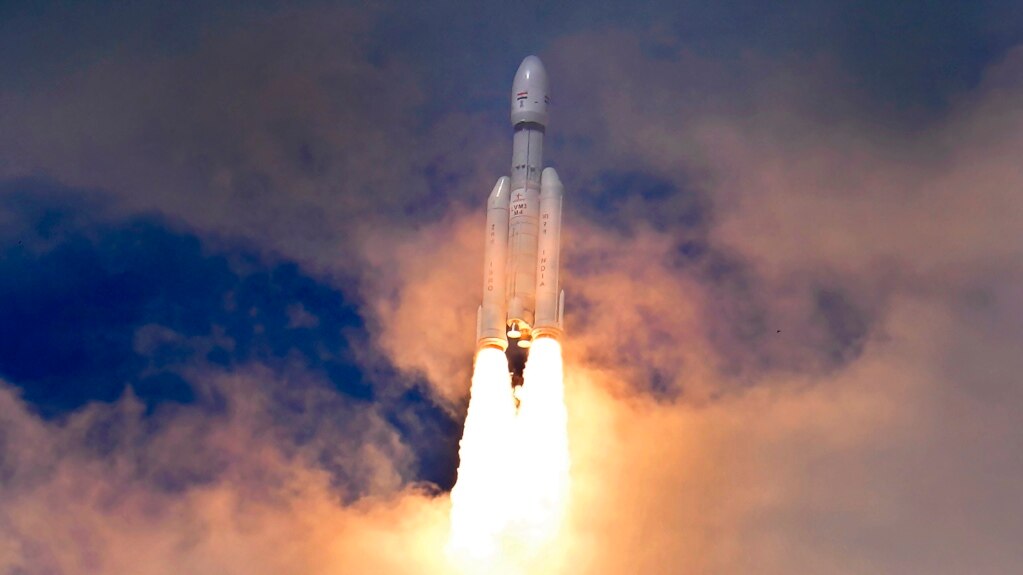An Indian spacecraft traveled to the far side of the moon Friday.
India’s space agency said it is a follow-up mission to its failed effort nearly four years ago. The mission was to land a space vehicle, called a rover, on the moon’s surface.
Chandrayaan-3, the word for “moon craft” in Sanskrit, took off from Sriharikota in southern India. It included an orbiter, a lander, and a rover in a demonstration of India’s growing space technology. The spacecraft will take a little more than a month before landing on the moon’s surface later in August.
Engineers and scientists from the Indian Space Research Organization (ISRO) celebrated as they watched the launch of the spacecraft at mission control at Satish Dhawan Space Center. Thousands of Indians cheered outside the center and waved the national flag as they watched the spacecraft rise into the sky.
“Congratulations India. Chandrayaan-3 has started its journey towards the moon,” ISRO Director Sreedhara Panicker Somanath said shortly after the launch.
A successful landing would make India the fourth country – after the United States, the former Soviet Union, and China – to do so.
Dr. Jitendra Singh is an Indian official for Science and Technology. He said part of Chandrayaan-3 has equipment that would provide data to the scientific community on the scientific makeup of moon soil and rocks.
Several countries and private companies are in a race to successfully land a spacecraft on the moon’s surface. In April, a Japanese company’s spacecraft is thought to have crashed while attempting to land on the moon. An Israeli organization tried to do something similar in 2019, but its spacecraft was destroyed on hitting the moon.
With India becoming the world’s fifth-largest economy, Prime Minister Narendra Modi’s government is ready to show off the country’s strength in security and technology.
India is using research from space and elsewhere to solve problems at home. Its space program has already helped develop satellite, communication and remote-sensing technologies. And it has been used to measure underground water levels and predict weather in the country.
“This is a very critical mission,” said Pallava Bagla. He is a science writer and co-writer of books on India’s space exploration. He added that India will require soft landing technology if it wants to attempt more missions to the moon.
India is also looking forward to its first mission to the International Space Station next year. It will be working with the United States as part of agreements reached between Modi and U.S. President Joe Biden at the White House last month.
Bagla said the visit by an Indian astronaut to the International Space Station will not slow down India’s own program. The program aims to launch an Indian astronaut from Indian soil on an Indian rocket in late 2024.
As part of its space program, active since the 1960s, India has launched satellites for itself and other countries, and successfully put one in orbit around Mars in 2014.
Singh said that based on the current path of growth, India’s space industry could be a trillion-dollar economy in the coming years.
I’m Gregory Stachel.

